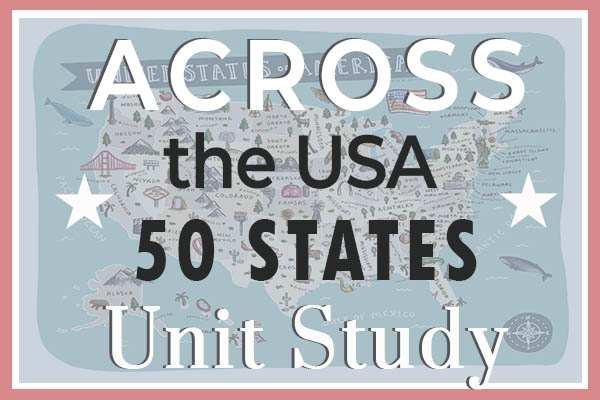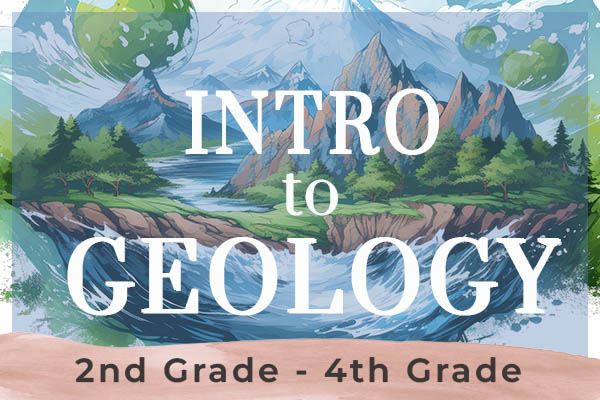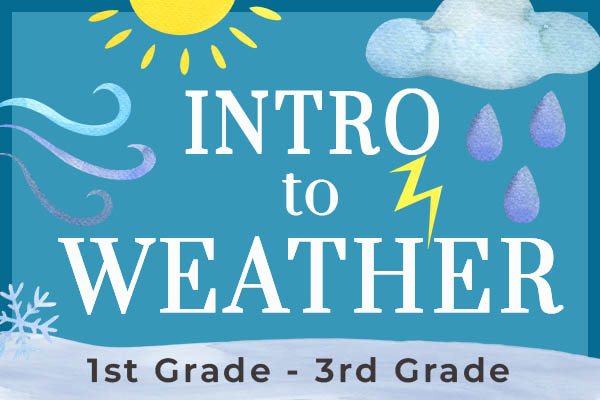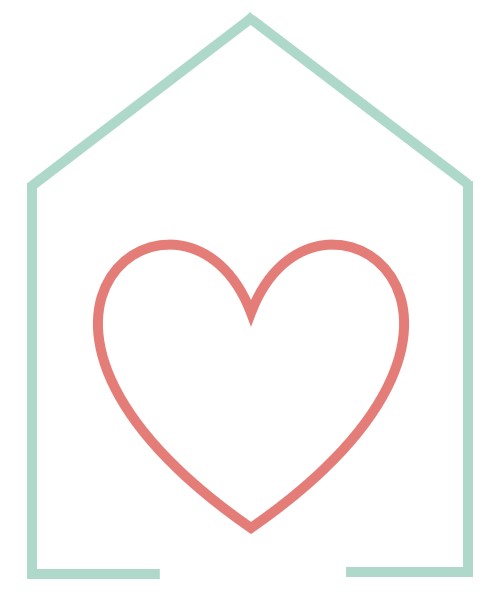Are you planning your 3rd Grade Homeschool Curriculum and need some ideas? Today we’re sharing our favorite elementary homeschool resources to help get you started!
HOMESCHOOLING
The BEST 3rd Grade Homeschool Curriculum
June 5, 2024
The following content may contain affiliate links. If you purchase something from the links, we may receive a commission.
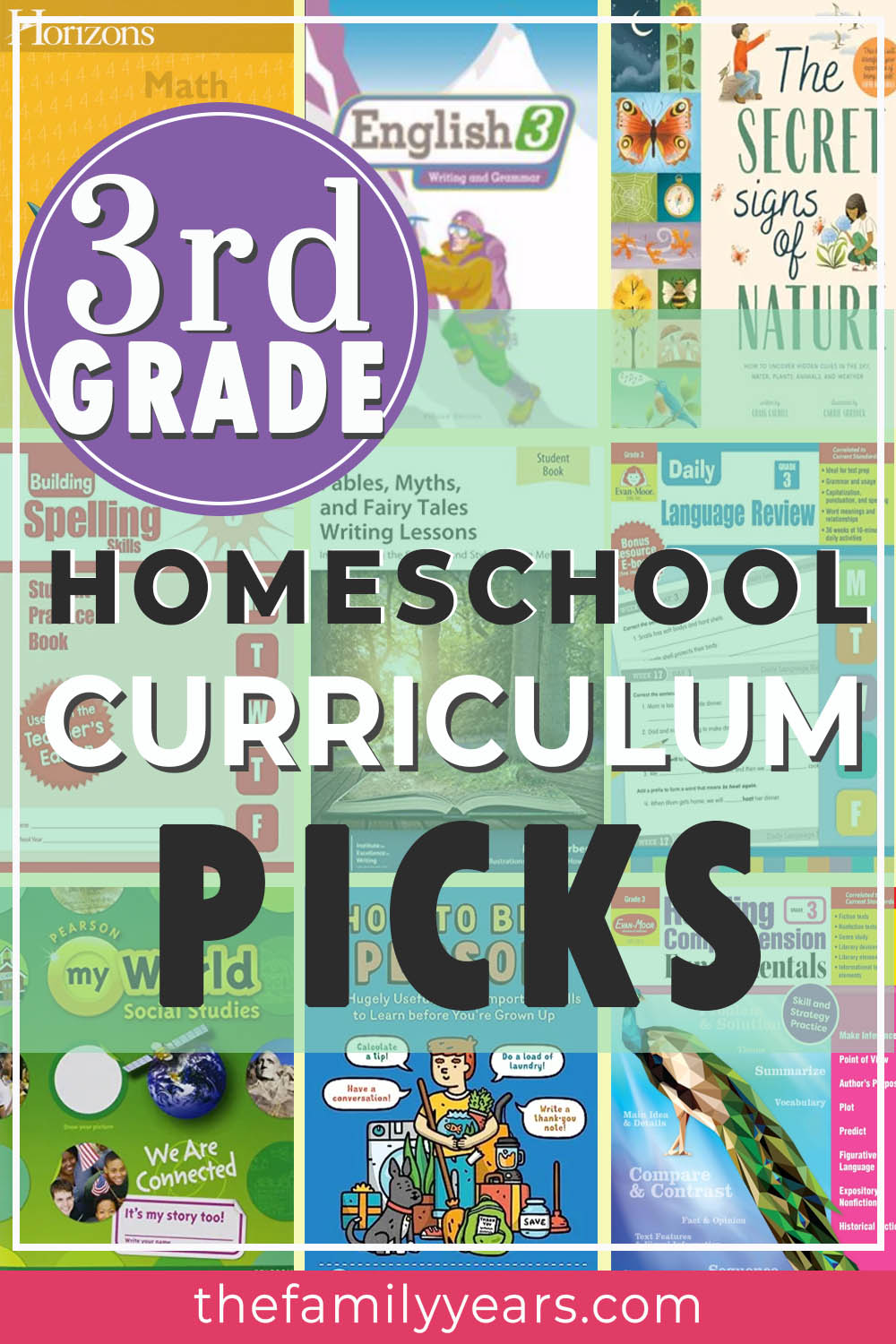
Third grade is a year of changes. Something happens during the second half of 3rd grade where kids just don’t seem so little anymore. The natural transition from little kids to tweens can be challenging, but also full of opportunity. Skills and interests are really starting to take shape, and this is a great year for exploring new things. Along with that, 3rd grade is a great year to start implementing more independent work, if you’re not doing that already. This can make it much easier when juggling multiple grades.
One of the things that I love best about homeschooling is flexibility. We started 3rd grade with a very similar schedule to 2nd grade, but it wasn’t working as well for us this year. As more activities were added to our schedule, it was a struggle to get everything completed. By the second quarter, I decided to shift the order that we do things, and it was exactly what we needed.
Below you will find the BEST 3rd Grade Homeschool Curriculum picks that we used in our homeschool classroom as well as alternatives for those who might be looking for something similar, but not the exact program. Since every family’s homeschooling journey and needs are going to be different, feel free to use this list as a starting point and tailor it as needed.
What subjects should be taught in the 3rd grade?
As with Kindergarten through 2nd grade, reading and math are still considered top priorities, but other core subjects are also given greater focus in 3rd grade. For our homeschool, a grammar-based language arts program was added as well as an actual curriculum-based writing program.
*If your child is still mastering the basics of reading (which many kids are at this age), we would recommend keeping that as the priority and saving a grammar-based program for 4th grade.
Here is the full list of 3rd Grade Homeschool Curriculum subjects we tackled this year. While it looks like a lot, we don’t cover all of the subjects year-round. For instance, in the fall, we complete social studies or history, and in the spring, we cover science. Extracurricular subjects also vary throughout the year. This allows us to complete everything on our list, but still keep our school day to around 3 hours (or less).
• Bible Study
• Language Arts
• Reading
• Spelling
• Writing
• Handwriting (Cursive)
• Math
• Social Studies
• Science
• Physical Education (PE)
• Extracurriculars
How many hours do you homeschool in 3rd grade?
While every family is different, our 3rd grade homeschool curriculum usually takes about 3 hours to complete. This includes time for our read-aloud books (which we still do) and extracurricular activities.
3rd Grade Homeschool Curriculum Picks
Let’s jump in! Here are the 3rd grade homeschool curriculum picks that we found work best for our family and some alternatives that we considered too.
We started doing a Word of the Day in 2nd grade and continued it for 3rd grade as well. We used Mrs. Wordsmith My Storyteller’s Word a Day book for 2nd grade and purchased Mrs. Wordsmith My Storyteller’s Word a Day Book 2 for this year. Each book includes 180 words with colorful illustrations, synonyms, etymology of the word, and how you could use it in a sentence. It also includes a writing prompt that could be worked into a creative writing unit, should you desire.
BIBLE STUDY
For our 3rd grade homeschool Bible study, each morning began with the writing of a Bible verse about Character. You could put together a list of verses on your own, but we used this workbook from Daily Grace Co.
Afterwards, we continued with The Wonder of Creation: 100 More Devotions about God and Science. We started this book in the second half of 2nd grade and didn’t complete it, so we finished it up during the first half of the year. This was our 3rd year using an Indescribable Kids devotional. These devotions, written by Louis Giglio, do a fantastic job combining scientific facts with biblical truths. We also used the Jesus Calling: 365 Devotions for Kids, which we also will use throughout the summer.
Although I won’t have a full review until next year, I am extremely excited about our Bible pick for 4th grade – The Biggest Story Curriculum by Crossway Publishers. I purchased both the curriculum and the accompanying children’s bible, The Biggest Story Bible Storybook, and have not been this excited about starting a new curriculum in a while! Although I plan on using it for 4th grade and 5th grade, it is recommended by the publisher for kindergarten through 5th grade.
A few other Bible storybooks that we have used in the past include:
– The Beginner’s Bible: Timeless Children’s Stories
– The Jesus Storybook Bible
– Jesus Calling Storybook Bible
– Indescribable: 100 Devotions for Kids about God and Science
– How Great is Our God: 100 Indescribable Devotions about God and Science
3rd Grade Homeschool Language Arts Curriculum
In 3rd grade, many Language Arts programs move away from phonics and focus more on grammar (or traditional English, depending on your text) and writing. Since we already began phasing out phonics in 2nd grade, this was the right move for our family.
In 2nd grade, we pieced together a curriculum with Evan-Moor workbooks including the Evan-Moor Daily Language Review (Grade 2) Student Workbook, Evan-Moor Language Fundamentals (Grade 2), and Evan-Moor Vocabulary Fundamentals (Grade 2). While no standalone Evan-Moor workbook makes up a complete curriculum, I believe a combination of books does cover everything your child will need to know in the elementary years.
While I do still like Evan-Moor and still included two workbooks in our curriculum for this year, I wanted to try a complete Language Arts curriculum for 3rd grade and see how it compared. Below are the books we used for our 3rd grade homeschool language arts curriculum.
Evan-Moor Daily Language Review (Grade 3) – As with last year, we used this book as a warmup each day before we began our main language arts focus. The daily activities include correcting sentences as well as grammar and vocabulary practice. It includes 36 weeks of daily practice providing 1 short lesson each day for 5 days. The student workbook does not contain an answer key, but if you are comfortable with elementary grammar, you most likely will not need to purchase the teacher’s edition.
BJU English (Grade 3) – I was torn between Abeka Language 3 and BJU English 3, but ultimately decided to go with BJU English 3. Although both books are similar in learning features and areas covered, BJU English alternates sections between grammar and writing. Even though we also worked in another writing program, I really liked that this was already included in the curriculum and another writing curriculum wasn’t actually necessary.
It’s also important to note that as of this writing, there are two editions that can be purchased right now. I chose the second edition because there were a couple of items covered that I didn’t see in the third edition. However, we’ll probably move to the later edition for upper grades at some point.
I did purchase both the student workbook and the teacher’s guide and DO feel it is necessary for this curriculum.
The BJU English 3 workbook covers all of the basics in sentence structure including types of sentences, fragments, subject and predicates, nouns, verbs, pronouns, adjectives, adverbs, contractions, suffixes, and basic diagramming. Students will also learn how to use a dictionary, thesaurus, encyclopedia, library, atlas, and understanding parts of a book. Lessons are developed for the first part to be completed together and the second half to be completed independently.
The writing lessons include writing game instructions, writing a friendly letter, writing a persuasive essay, writing a story, writing a book report, writing a sound poem, writing a research report, and writing a compare-contrast essay.
We used this book every day, in addition to the reading comprehension book and IEW writing curriculum. Basically, if BJU English 3 was focused on a grammatical topic, we would use IEW for writing that week and if BJU was focused on writing, we would use the Evan-Moor reading comprehension book. This allowed us to work in writing each day and reading comprehension on the biweeks.
If BJU English isn’t quite what you’re looking for, here are some other 3rd Grade Language Arts Homeschool Curriculums that we considered:
– Abeka Language 3
– Evan-Moor Language Fundamentals Grade 3
– Horizons Phonics and Reading Grade 3
Will we continue using the BJU English curriculum for 4th grade?
Yes! This program worked well for our language arts needs and we will be using BJU English 4 for the fall semester. We will also continue with Evan-Moor Reading Comprehension Fundamentals (Grade 4).
READING AND READING COMPREHENSION
Our homeschool reading is a combination of student-led and teacher-led resources, including read-aloud chapter books. Along with an independent quiet reading time, for the student-led portion, we used the workbook below.
Evan-Moor Reading Comprehension Fundamentals (Grade 3) – The Reading Comprehension Fundamentals book is filled with a variety of both fiction and nonfiction units. I purchased the teacher’s edition and used it as a workbook. We used Evan-Moor Reading Comprehension for second and third grade and will continue with it in fourth grade as well.
The stories and short excerpts introduce your child to the main idea and detail, visual information, cause and effect, compare and contrast, sequence, fact and option, making inferences, and more. It also explores the character, setting, plot, themes, and point of view for fictional texts. For additional reading practice, Evan-Moor also offers:
– Evan-Moor Daily Reading Comprehension (Grade 3)
– Evan-Moor Nonfiction Reading Practice (Grade 3)
READ-ALOUD BOOKS
An integral part of our homeschooling day involves read-aloud stories. Typically, we reserve a part of the morning for read-alouds and usually a chapter or so at bedtime. If you aren’t currently incorporating read-aloud stories into your homeschool routine, I’d highly recommend it. Beyond the educational benefits of expanding your child’s vocabulary and being introduced to different book styles, it is such a wonderful bonding experience that will create lasting memories.
Below is a list of chapter books we tackled this year, in no particular order.
– The Last Bear by Hannah Gold
– The Vanderbeekers of 141st Street by Karina Yan Glaser
– The Lion, the Witch, and the Wardrobe by C. S. Lewis
– Escape from Mr. Limoncello’s Library by Chris Grabenstein
– Treasure Hunters by James Patterson
– Echo Mountain by Lauren Wolk
– The Train to Impossible Places by P. G. Bell
– The Hardy Boys: The Tower Treasure by Franklin W. Dixon
– Nancy Drew: The Secret of the Old Clock by Carolyn Keene
– Harry Potter and the Sorcerer’s Stone by J. K. Rowling
– The Doughnut Fix by Jessie Janowitz
– The One and Only Ivan by Katherine Applegate
For a list of even more read-aloud books for your upcoming year, we have this list of 3rd grade read-aloud chapter books and 2nd grade read-aloud chapter books, that any child in elementary school would find enjoyable.
SPELLING
In second grade, we made the switch from a random list of words to an actual workbook for spelling. We used an Evan-Moor workbook for this subject and continued in 3rd grade as well. In my opinion, this curriculum is not as rigorous as other spelling programs. For our home, that is exactly what was needed, but if you have an excellent speller, you may want to consider leveling up.
Evan-Moor Building Spelling Skills (Grade 3) – The Building Spelling Skills workbook includes 4 days of activities and an optional spelling test on the fifth day. There are 15 words to learn each week with the option of adding 2 additional words of your choosing. The student workbook contains all of the needed activities, but it does not contain the answers or dictation sentences. If you want to include the dictation sentences, you will need the teacher’s workbook as well.
Other 3rd Grade Spelling Homeschool Curriculums you may want to consider include:
– All About Spelling (Level 3)
– Spelling You See C – Wild Tales
Will we continue using the Evan-Moor Spelling curriculum for 4th grade?
Yes! Spelling is one of the subjects we have to work a little harder on in our house so I can appreciate a gentler approach. I believe that it is better to master the basics of spelling rather than force more difficult words and with enough exposure, children will end up exactly where they need to be.
WRITING
For 3rd grade, I decided we would try an actual curriculum for writing instead of a more casual approach. Even though BJU English does include writing between each grammar section, I wanted writing to be a part of our everyday schedule, so we also worked in a program from the Institute of Excellence in Writing (IEW). I heard good things about this program from a friend whose child goes to a Christian private school in the area, so I was willing to give it a try. The workbooks are theme-based and would typically last for one calendar year. Since we are alternating this with our English workbook for writing, it will take us two years to complete the program.
To begin using this program, I would highly recommend purchasing Teaching Writing: Structure and Style. It will help you understand and teach the concepts that are laid out in the student book. This way of writing was not something I was familiar with, so the instructional guide was invaluable.
IEW: Fables, Myths, and Fairytales – You will need one workbook per student. Students will learn how to make a key word outline, how to write a composition, proofreading, and creating a final draft. I did purchase the teacher workbook as well, which was helpful in the beginning, but by mid-semester, I did not reference it as much.
Other 3rd Grade Homeschool Writing Curriculums you may want to consider include:
– Writeshop Primary Book C
– Essentials in Writing (EIW) Level 3
Will we continue using the Institute for Excellence in Writing curriculum for 4th grade?
Yes, we will continue using this writing program for fourth grade. I was concerned that it was going to be too much between the English book and reading comprehension workbook, but it was actually the perfect amount for our homeschool. I’m not completely sold on the program as a whole. I did like it, but I didn’t love it. Since we only completed half of the book this year, we will finish it next year, and then make a decision whether we will continue it for 5th grade.
HANDWRITING
This was our 2nd year learning cursive and I believe it has been helpful for two reasons. One, it helps to read and write cursive, which is almost a lost art, but two, it also forces children to slow down. Handwriting has always been a struggle in our house and part of it is the hurry to complete an assignment. With cursive, it takes more time to complete and therefore requires more concentration and ultimately better handwriting.
At what age do you begin teaching cursive?
Many homeschool families begin cursive handwriting in 2nd or 3rd grade, while others start as early as Kindergarten. As stated above, we started in 2nd grade, but 3rd grade is a very common age to begin.
Abeka Writing with Phonics (1) Cursive – The Abeka Cursive program begins in Kindergarten. If this is your first-year teaching cursive, you should begin at this level regardless of the grade your child is in. The levels build on each other with less practice on the formation of letters as the program progresses. As an introductory book to teaching cursive writing, I felt like the speed and activities were exactly what we needed. Once we completed the K5 program, we moved on to cursive grade 1, and next year we will complete grade 2.
Other 3rd Grade Cursive Handwriting Programs to consider include:
– Learning without Tears Cursive – Cursive Handwriting
– Horizons Penmanship Cursive Grade 3
3rd Grade Homeschool Math Curriculum
Choosing a Homeschool Math Curriculum –
Math is a core subject and one that a lot of students struggle with. I include this intro with all of our curriculum selections because I think it is extremely important to figure out what works best for your family. If you’ve read some of our other homeschooling picks from previous grades, just scroll down for our 3rd grade homeschool math recommendations.
If you are new to homeschooling, picking a solid math program will help you in the long run. While some subjects are easy to change from year to year, math is a core subject, so it is important to find what works for your student as soon as possible. With that said, if your current math curriculum isn’t working, I would encourage you to try something new until you find a good fit.
When choosing a homeschool math curriculum, you will need to decide if you would like a traditional math program or one that follows common core standards. If you are not keen on teaching math, there are also many online options available.
The second point to consider is whether you would prefer a program that is mastery or spiral. In a mastery program, the student will learn a new concept and practice that concept until it is fully mastered. In a spiral program, the student will learn a new concept, practice that concept, and then review other concepts learned. It’s considered a spiral program because the concepts come up over and over again throughout the year, building on each lesson.
We started with Horizons math in Kindergarten with the anticipation of eventually switching over to Saxon math. When originally researching which math program to use, that seemed to be the consensus in a lot of homeschooling boards. However, it has been a good fit for our home, I can say that we have no intention of switching any time soon.
The Horizons math program goes from Kindergarten through 8th grade and is a spiral program. It is important that you begin the program in the correct level. You can find the Horizons math placement test here.
Our 3rd Grade Math Homeschool Curriculum –
Horizons Math Grade 4 – Horizons math uses a well-organized spiral approach to teaching math. The program consists of workbook drills, memorization, and manipulatives to enforce each new skill or concept. While the teacher workbook is not required for some subjects, I would highly recommend it for math.
This is our 4th year using Horizons Math and up to this point we have really loved it. We started with Horizons Math 1st grade (in Kindergarten) so we’re now using Horizons Math 4th grade (for 3rd grade). If you have a child that excels in math, I recommend this approach. However, the Horizons math program is grade appropriate and the Horizons Math 3rd Grade book is most certainly sufficient for that age level.
Horizons Math for 4th Grade starts off with a lot of review and not a lot of new information. Then around day 50 or so, it really starts to build on new concepts at a very swift pace. I believe this could have been spread out better. For this reason, of all the years we have used Horizons Math, this was my least favorite.
This specific grade also includes more religious (Christian) elements than previous grades. As a Christian family, this was not a problem for us, but if you are looking for a more secular program, this is something that should be noted.
Also, if your child hasn’t mastered their multiplication tables yet (which are typically introduced in the 3rd grade), this is the grade where that’s going to be very important. Things move very quickly in this book and knowing multiplication is expected. To really master the 0 – 12 multiplication tables, we used the following daily:
Multiplication Flash Cards 0 – 12
100 Days of Timed Tests: Multiplication
Other popular 3rd Grade Homeschool Math Curriculums that we considered include:
– Saxon Math 3
– Singapore Math, Level 2, Grade 3
– Abeka Arithmetic 3
Social Studies / History / Geography
For social studies, we used our FREE Across the USA – 50 States Unit Study that combines Geography, Language Arts, Social Studies, and Art to introduce students to all 50 states and territories within the United States. Each day consisted of learning about a new state, watching a video showcasing a local area from the state, and completing a state-related activity.
As a catchall, we also included the consumable Pearson MyWorld workbook (Grade 3). If you are looking for a social studies program that is similar to what is going to be covered in public school, this is a fantastic resource. For reference, this was our second year that we completed a round of standardized testing, and I was thrilled to see that we had covered EVERYTHING that was on the test for the social studies portion.
SCIENCE
For 3rd grade science, our focus was on Planet Earth, which included Geology and Weather. Our FREE Intro to Geology Unit Study and Early Elementary Weather Unit Study are available now! If you’d like to get a head start and purchase the main textbooks, these are the ones that are included in the curriculum.
3rd GRADE HOMESCHOOL CURRICULUM – GEOLOGY
– Geology for Kids: A Junior Scientist’s Guide to Rocks, Minerals, and the Earth Beneath Our Feet
– Everyday STEM Science – Geology
3rd GRADE HOMESCHOOL CURRICULUM – WEATHER
– DK What’s the Weather?: Clouds, Climate, and Global Warming
– The Secret Signs of Nature: How to Uncover Hidden Clues in the Sky, Water, Plants, Animals, and Weather
PE - Physical Education
Some states require physical education as part of the homeschooling curriculum. Our state is one of them. PE can come in many different forms. We combined physical activity with learning about health and nutrition for our program. If your child is active in sports, the days with practice or games could easily be considered physical education for that day. Taking a walk around the park, bicycling in the neighborhood, jumping rope in the backyard are also easy to do activities that could count as PE.
Extracurricular Subjects
Our extracurricular subjects for this year were focused on health, life skills, money for beginners, typing, art, and baking.
For young girls, I am a big fan of the American Girl Smart Girl’s Guide series. There are many different topics to choose from, but this year, we read through A Smart Girl’s Guide: Digital World. This book discusses the fun aspects of the online world along with safety precautions that all kids need to be aware of.
We also read through How to be a Person: 65 Hugely Useful, Super-Important Skills to Learn before You’re Grown Up. This book includes a little bit of everything from basic manners to life skills. The nature of the book also lends itself to being an activity book so whenever we could, we would actually put the day’s lesson into practice like How to Whip Up a Smoothie or How to Tie Basic Knots.
Usborne came out with a new series for beginners, and we have loved it so far. We worked through Money for Beginners this year and plan on jumping into Economics for Beginners for 4th grade. Money for Beginners includes a vast amount of information regarding how money works, earning, borrowing, spending, and more. It is a good introduction to money in general, but I wouldn’t call it a financial literacy book. If your focus is on teaching your kids about earning, saving, and spending specifically, I would try either Dave Ramsey’s Financial Peace Kids or Evan-Moor Financial Literacy, Grade 3.
For typing, we used typing.com. Typing.com incorporates typing lessons with additional games to help students learn to type in an entertaining way. And the best part? It’s 100% free. We don’t practice every day, but I am definitely starting to see some improvement!
Other fun extracurriculars that we worked on were art and baking. These were not added until the end of the year so we will be working through the curriculum in the summer as well.
Looking for other ideas for 3rd grade homeschool curriculum extracurricular subjects? Here are some more homeschool extracurricular ideas you may want to add to your curriculum.
– Art / Painting / Drawing / Pottery
– Music
– Sewing / Knitting / Crocheting
– Woodworking
– Crafting
– Cooking / Baking
– Foreign Language
– Coding / Robotics
– Life Skills
3rd Grade Homeschool Schedule Example
Below is what our 3rd grade homeschool schedule looks like during a normal day. While I have included times in the schedule below, our day is very flexible. Sometimes we start later. Sometimes not everything gets covered. But somehow, it all ends up working out by the end of the year.
7:30am – Breakfast / Get Dressed / Brush Teeth / Brush Hair / Make Bed
8:00am – Reading (Quiet)
8:30am – Word of the Day / Spelling
8:40am – Handwriting (Cursive)
8:50am – My Scripture Workbook / Bible Study / Devotional
9:00am – Math
9:30am – Read Aloud Chapter Book
10:00am – BREAK
10:30am – Language Arts
11:00am – Writing
11:15am – Unit Study (Social Studies or Science)
11:45am – LUNCH
12:30pm – Unit Study (Extracurricular)
1:00pm – DONE
We hope you found this 3rd Grade Homeschool Curriculum helpful. If you enjoyed this post, you may also like the following:
● Homeschooling 101
● FREE Around the World Unit Study
● FREE Across the USA – 50 States Unit Study
● FREE Intro to Space Unit Study
● 16 Super Read Aloud Chapter Books for Second Grade
● The BEST 2nd Grade Homeschool Curriculum
● The BEST 4th Grade Homeschool Curriculum
● 14 Fun Read Aloud Chapter Books for First Grade
● The BEST 1st Grade Homeschool Curriculum

















